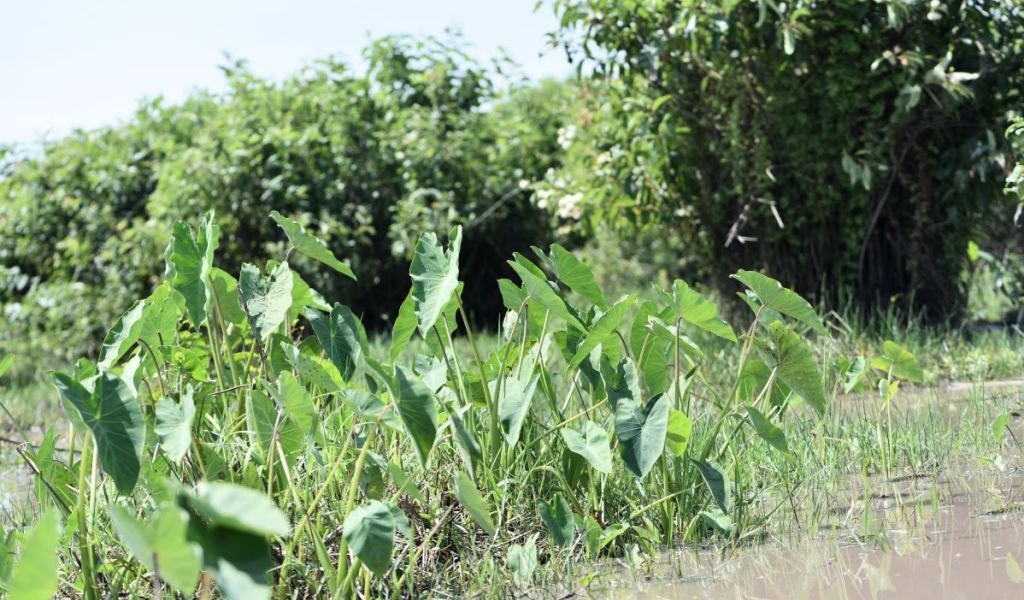ເຜືອກ / Taro
APA 6th ed. ເຜືອກ / Taro. (2023, August 7). Retrieved from https://www.phakhaolao.la/kb/0000177
MLA 8th ed. ເຜືອກ / Taro. Pha Khao Lao, 7 August 2023, https://www.phakhaolao.la/kb/0000177.
Chicago 17th ed. Pha Khao Lao. 2023. "ເຜືອກ / Taro." Published August 7, 2023. https://www.phakhaolao.la/kb/0000177.

Aron colocasium (L.) St.-Lag.
Arum chinense L.
kla di ai, kheu thi pho, khu chi bong, khu thai, thi pho, tun, pheuak
Vietnamese: khoai mon, khoai nuoc, mon nuoc, khoai soi
Chinese: yu yuan bia zhong, ye yu
English: taro, dasheen, cocoyam, elephant ears, eddo
Pheuak is a herb with a tuber that is 3-7 cm (Houa Noi) or 10-15 cm (Houa Nyai) in diameter, and has ring scars on the surface where leaves have fallen off. The plant has five to seven leaves that grow up to 50 cm long, 15-20 cm wide, and are darkgreen to green-yellow, sometimes spotted or striped, with a green or purple leafstalk up to 1 m long. The leaf sheaths are yellow and narrow, 15-35 cm long. Neither flowering nor fruiting are observed. Two varieties exist: var. esculentum (pheuak houa nhai, large tuber), widely cultivated; and var. antiquorum (Schott) Hubb. & Rehd (Pheuak Houa Noi, small tuber). Different taro species are cultivated throughout the tropics and many wild or naturalised clones have been found in Southeast Asia, where it was possibly in use even before rice was cultivated.
Tubers are rich in starch and form an important staple food, but are also used in sweets and desserts. Taro is especially useful for people who are allergic to cereals and can also be consumed by children who are ensitive to milk. When raw it is poisonous, causing irritation of the mouth and throat, but is edible when cooked or fried in fish sauce and sugar. Tubers stimulate the flow of urine and have laxative properties. They also stimulate milk secretion, help stop bleeding and act as a stimulant. Shoots and stalks are boiled and served with Jeo or put in curries. Leaves can be used to wrap vegetables or as pig feed. Taro is sometimes planted as an ornament.
